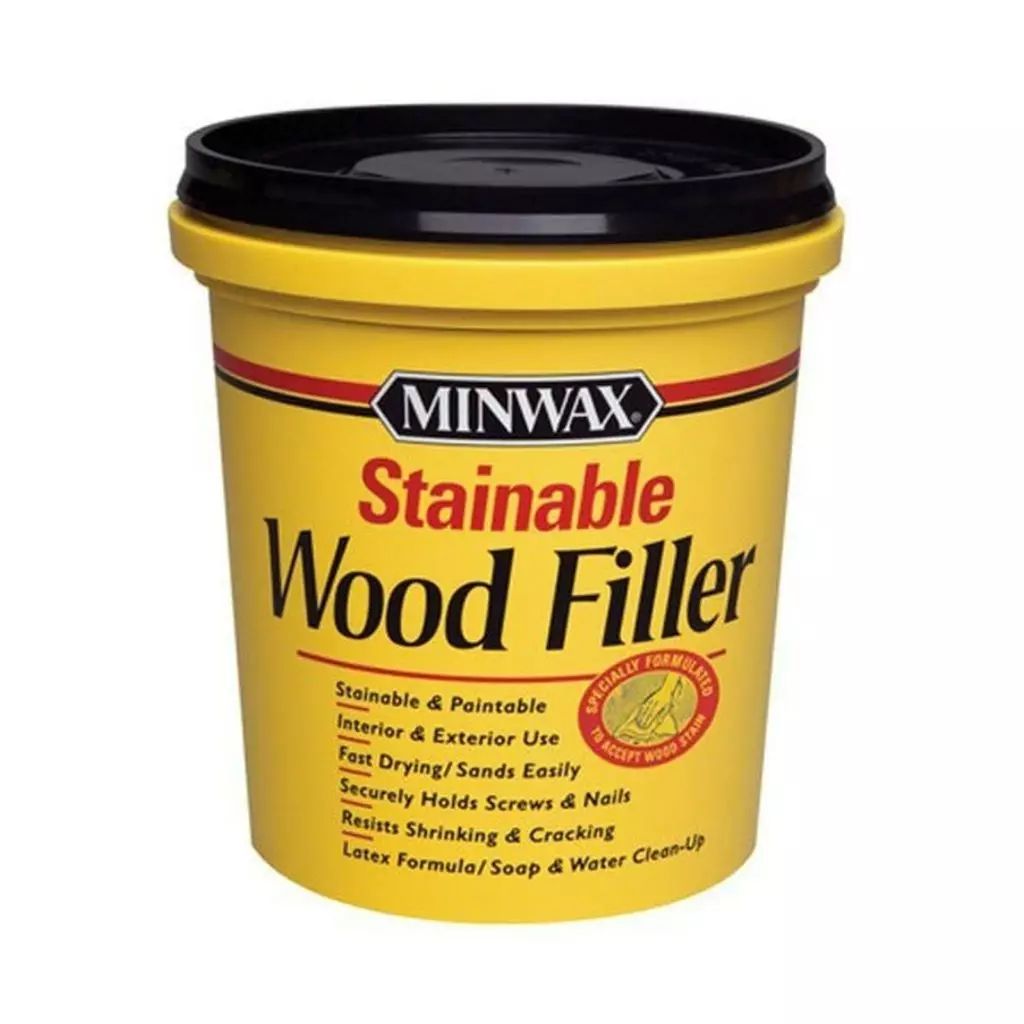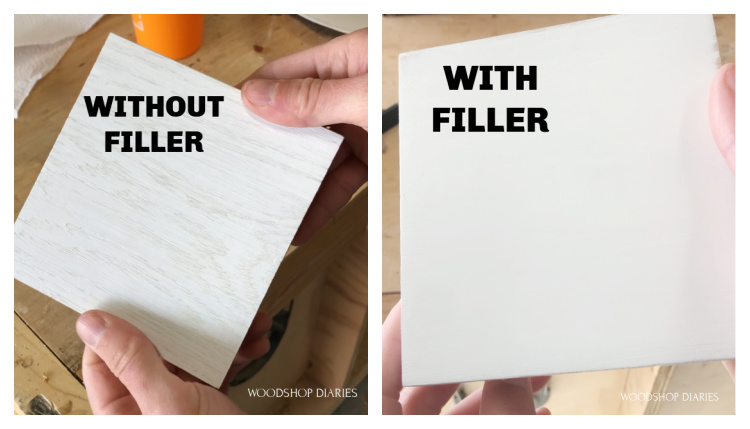Understanding Wood Filler Needs for Cabinets: Best Wood Filler For Cabinets

Wood fillers are essential for restoring cabinets to their former glory, tackling various imperfections that can arise over time. Whether it’s a minor scratch, a deep gouge, or a knot hole, the right wood filler can seamlessly blend with the surrounding wood, leaving your cabinets looking pristine.
Types of Damage
Wood fillers are used to repair a variety of damage to cabinets, including:
- Scratches and Dents: These are common occurrences on cabinet surfaces, especially those that receive frequent use. Wood filler can be used to fill in these imperfections and create a smooth, even surface.
- Gouges and Chips: Deeper damage, such as gouges and chips, can be more challenging to repair, but wood filler can still be used to fill in the missing wood and restore the cabinet’s surface.
- Knot Holes: Knot holes are natural imperfections in wood that can weaken the structure of a cabinet. Wood filler can be used to fill in these holes and create a solid, stable surface.
- Cracks and Splits: Cracks and splits can occur in wood due to changes in temperature and humidity. Wood filler can be used to fill in these gaps and prevent them from spreading.
Factors to Consider When Choosing a Wood Filler, Best wood filler for cabinets
Selecting the right wood filler is crucial for achieving a seamless repair. Several factors come into play when making this decision:
- Type of Wood: Different wood types have different densities and grain patterns. Choosing a wood filler that matches the wood’s color and grain is essential for a natural-looking repair. For example, a filler designed for oak cabinets might not be suitable for maple cabinets.
- Severity of the Damage: The extent of the damage will influence the type of filler required. For minor scratches and dents, a lightweight filler might suffice, while deeper gouges and knot holes might require a stronger, more durable filler.
- Desired Finish: The final finish of the cabinet will also affect the choice of filler. If the cabinet is to be painted, a filler that can be easily sanded and painted over is preferable. For cabinets with a natural wood finish, a filler that can be stained and matched to the existing finish is necessary.
Types of Wood Fillers
Various types of wood fillers are available, each with its own strengths and weaknesses. Understanding these differences will help you choose the best filler for your needs.
| Type of Filler | Characteristics | Applications | Ease of Use |
|---|---|---|---|
| Epoxy Filler | Strong, durable, water-resistant, two-part formula | Deep gouges, knot holes, cracks, high-traffic areas | More challenging to use, requires precise mixing |
| Wood Putty | Easy to apply, dries quickly, available in various colors | Scratches, dents, minor imperfections, small holes | Easy to use, can be sanded and painted |
| Paste Wood Filler | Smooth, easy to sand, available in various colors | Scratches, dents, minor imperfections, small holes | Easy to use, can be stained and matched to existing finish |
Popular Wood Filler Brands and Products

Choosing the right wood filler for your cabinet repair project can make a big difference in the final outcome. The market offers a variety of brands and products, each with its own unique features and benefits. Understanding the strengths and weaknesses of different wood fillers can help you make an informed decision.
Popular Wood Filler Brands
Reputable wood filler brands known for their quality and performance in cabinet repairs include:
- Minwax: Minwax is a well-known brand offering a range of wood fillers, including their popular “Wood Filler” and “Paintable Wood Filler.” These products are known for their easy application, smooth finish, and good adhesion to wood. They are also readily available at most home improvement stores.
- Elmer’s: Elmer’s is another popular brand that offers wood fillers for various applications. Their “Wood Filler” is a versatile product suitable for both indoor and outdoor use. It is known for its fast drying time and good sanding properties.
- DAP: DAP is a brand known for its construction products, including wood fillers. Their “Wood Filler” is a durable and water-resistant product designed for both interior and exterior use. It is suitable for filling large gaps and cracks.
- Bondo: Bondo is a well-known brand for its automotive repair products, but they also offer a range of wood fillers. Their “Wood Filler” is a strong and durable product suitable for filling large gaps and cracks. It is known for its excellent adhesion and sanding properties.
Popular Wood Filler Products
- Minwax Wood Filler: This is a popular all-purpose wood filler that is easy to apply and sand. It is suitable for filling small to medium-sized gaps and cracks. It is available in a variety of colors to match different wood types.
- Elmer’s Wood Filler: This is a fast-drying wood filler that is ideal for quick repairs. It is easy to sand and provides a smooth finish. It is available in both indoor and outdoor versions.
- DAP Wood Filler: This is a durable and water-resistant wood filler that is suitable for both interior and exterior use. It is ideal for filling large gaps and cracks and is known for its excellent adhesion.
- Bondo Wood Filler: This is a strong and durable wood filler that is ideal for filling large gaps and cracks. It is known for its excellent adhesion and sanding properties.
Wood Filler Comparison Table
| Product | Price (approx.) | Drying Time | Sanding Ease | Overall Performance |
|---|---|---|---|---|
| Minwax Wood Filler | $8-$12 | 30-60 minutes | Easy | Good for small to medium-sized gaps |
| Elmer’s Wood Filler | $6-$10 | 15-30 minutes | Easy | Good for quick repairs |
| DAP Wood Filler | $10-$15 | 60-90 minutes | Moderate | Good for large gaps and cracks |
| Bondo Wood Filler | $12-$18 | 45-60 minutes | Moderate | Excellent for large gaps and cracks |
Applying and Finishing Wood Filler

Applying wood filler to cabinets requires careful preparation, application techniques, and finishing steps to ensure a seamless and professional-looking repair. The key is to work in a clean and organized manner, taking your time to ensure a smooth and even application.
Preparing the Surface
Before applying wood filler, it is crucial to prepare the surface properly. This step ensures that the filler adheres well and creates a smooth, even finish.
- Clean the surface: Remove any dust, dirt, or debris using a damp cloth or vacuum cleaner.
- Sand the area: Use sandpaper with a grit of 120 to 150 to create a rough surface that will help the filler adhere better.
- Apply a primer: A primer helps to create a smooth surface and ensures the filler bonds properly. This step is particularly important if you are using a water-based wood filler.
Applying Wood Filler
The application method depends on the type of wood filler you choose. However, general steps apply to most fillers.
- Use a putty knife: Apply the filler with a putty knife, pressing it firmly into the gap or hole. Ensure that the filler is level with the surrounding surface.
- Remove excess filler: After applying the filler, remove any excess with a putty knife or scraper. Be careful not to disturb the filler that is already in place.
- Allow the filler to dry: The drying time will vary depending on the type of filler you use. Check the manufacturer’s instructions for the specific drying time.
Sanding and Finishing
After the filler has dried, you need to sand and finish it to create a seamless and professional-looking repair.
- Sand the filler: Use sandpaper with a grit of 180 to 220 to smooth out the filler and blend it with the surrounding wood. Start with a coarser grit and gradually move to a finer grit. Work in a circular motion to avoid creating sanding marks.
- Apply a stain: If the cabinet is stained, you will need to apply a stain to the filler to match the existing finish. Choose a stain that matches the color of the cabinet as closely as possible. Apply the stain in thin coats, allowing each coat to dry completely before applying the next.
- Apply a sealant: Apply a sealant to the filler to protect it from moisture and wear. Choose a sealant that is compatible with the existing finish on the cabinet.
Matching the Wood Filler
Matching the wood filler to the existing cabinet finish is essential for a natural and undetectable repair.
- Choose the right color: Wood fillers are available in a wide range of colors. Choose a color that closely matches the color of the cabinet. If you are unsure, it is best to err on the side of a slightly darker color. You can always lighten the color later with a stain.
- Use a wood filler that is designed for the type of wood: Some wood fillers are specifically designed for certain types of wood. For example, there are wood fillers that are designed for hardwoods, softwoods, and even exotic woods. Using the correct type of filler will help to ensure a natural-looking repair.
- Test the filler in an inconspicuous area: Before applying the filler to the entire repair area, test it in an inconspicuous area to ensure that it matches the existing finish. This will help to prevent any surprises later on.
Best wood filler for cabinets – Okay, so you’re thinking about fixing up those cabinets, right? Finding the best wood filler is key! It’s all about that smooth finish, ya know? And hey, if you’re looking for some inspiration for the rest of your space, check out this article on bedrooms with hardwood floors and rugs – it might just spark some ideas for your whole room! Once you’ve got those cabinets looking sharp, you’ll be ready to rock that new space, girl!
Okay, so you’re all about that wood filler for your cabinets, right? But listen, if you’re also dealing with a small bedroom and a queen bed, you need to be a space ninja! Check out this awesome guide on how to decorate a small bedroom with a queen bed to maximize your space and style.
Anyway, back to the cabinets, you gotta make sure that wood filler is smooth and flawless. You don’t want any bumps or cracks ruining your vibe, right?
